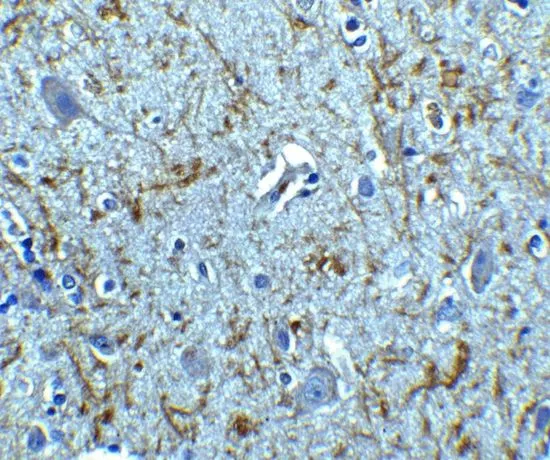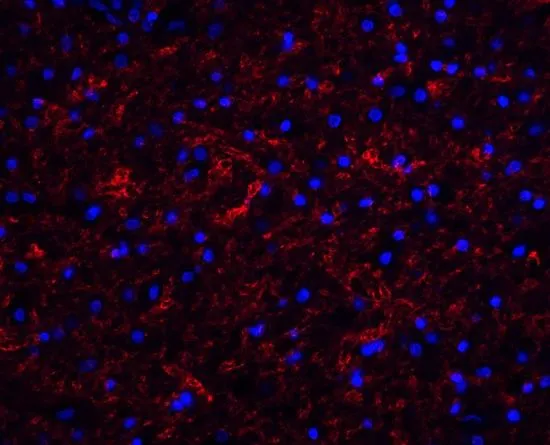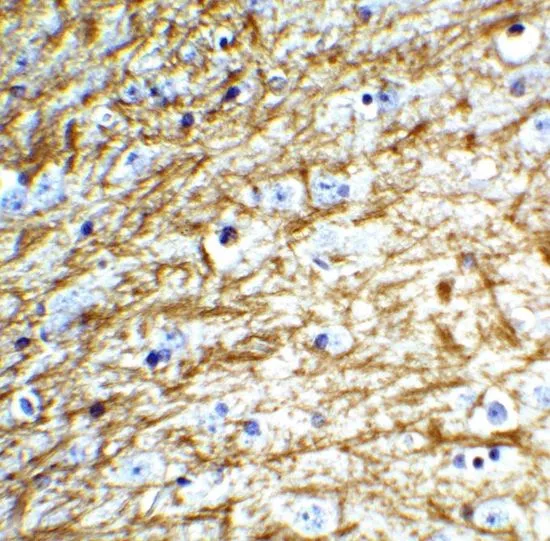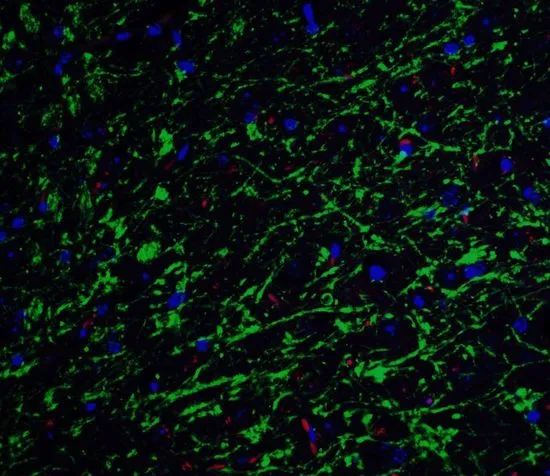
IHC-P analysis of human brain tissue using GTX31733 Clusterin antibody. Working concentration : 5 microg/ml
Clusterin antibody
GTX31733
ApplicationsWestern Blot, ELISA, ImmunoHistoChemistry, ImmunoHistoChemistry Paraffin
Product group Antibodies
TargetCLU
Overview
- SupplierGeneTex
- Product NameClusterin antibody
- Delivery Days Customer9
- Application Supplier NoteWB: 0.5 - 1 microg/mL. IHC-P: 5 microg/mL. *Optimal dilutions/concentrations should be determined by the researcher.Not tested in other applications.
- ApplicationsWestern Blot, ELISA, ImmunoHistoChemistry, ImmunoHistoChemistry Paraffin
- CertificationResearch Use Only
- ClonalityPolyclonal
- Concentration1 mg/ml
- ConjugateUnconjugated
- Gene ID1191
- Target nameCLU
- Target descriptionclusterin
- Target synonymsAAG4, APO-J, APOJ, CLI, CLU1, CLU2, KUB1, NA1/NA2, SGP-2, SGP2, SP-40, TRPM-2, TRPM2, clusterin, aging-associated protein 4, apolipoprotein J, complement cytolysis inhibitor, complement lysis inhibitor, complement-associated protein SP-40,40, epididymis secretory sperm binding protein, ku70-binding protein 1, sulfated glycoprotein 2, testosterone-repressed prostate message 2
- HostRabbit
- IsotypeIgG
- Protein IDP10909
- Protein NameClusterin
- Scientific DescriptionThe protein encoded by this gene is a secreted chaperone that can under some stress conditions also be found in the cell cytosol. It has been suggested to be involved in several basic biological events such as cell death, tumor progression, and neurodegenerative disorders. Alternate splicing results in both coding and non-coding variants.[provided by RefSeq, May 2011]
- Storage Instruction-20°C or -80°C,2°C to 8°C
- UNSPSC12352203






![WB analysis of human seminal plasma (non-reducing) using GTX20349 Clusterin antibody [Hs-3].](https://www.genetex.com/upload/website/prouct_img/normal/GTX20349/GTX20349_20191028_WB_1_w_23060620_949.webp)



